Premium Only Content
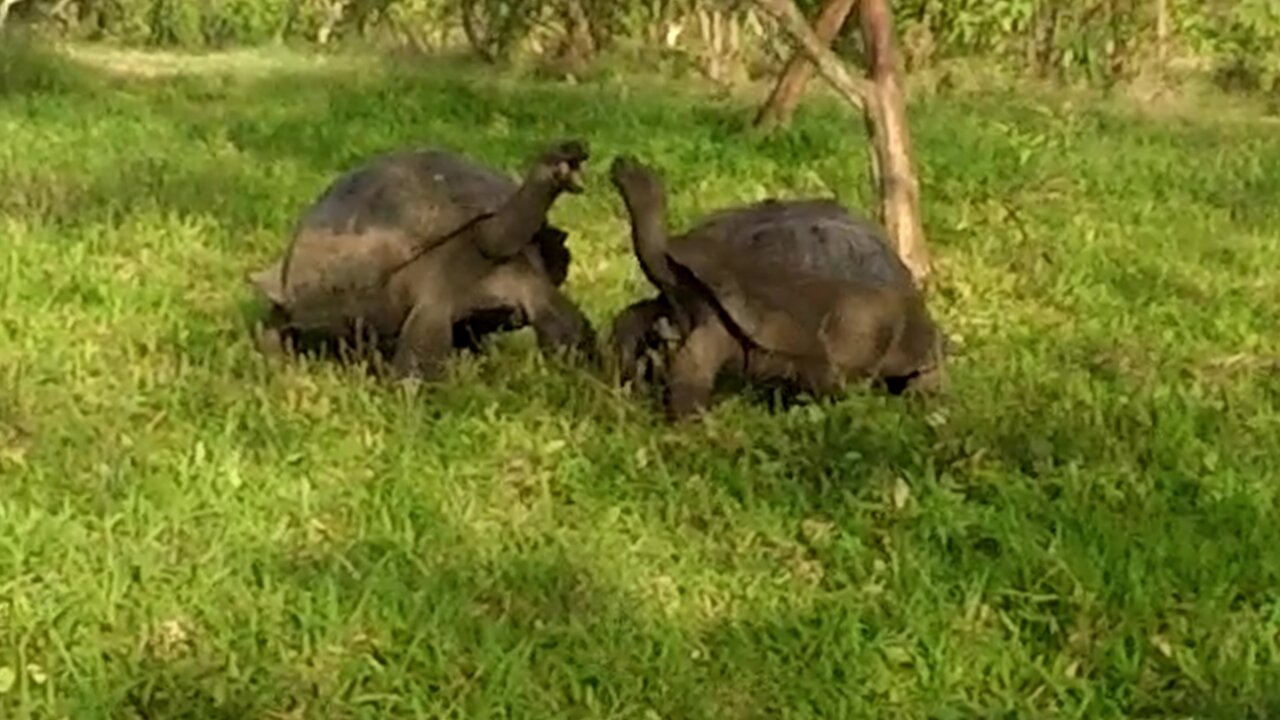
Ancient Galapagos tortoises clash in a turf war over grazing rights
Galapagos tortoises are among the longest living animals on earth. Capable of living more than 200 years, these ancient beasts could be old enough to have been present when Charles Darwin made his historic visit to this area two centuries ago. It was this voyage that provided Charles Darwin with the information and the inspiration behind his theory of evolution. This new way of looking at things shaped the way we see the world, our history, and even our future.
Galapagos tortoises are immense and majestic, moving slowly as they wander freely on the islands in the Galapagos. They graze on almost any kind of vegetation and they grow slowly, reaching weights of well over 225kg (500lbs). Fully grown, they could easily fill the passenger compartment of a small car. They cannot be moved or injured easily by any predator. They retreat into their shells and simply outwait any animal that would try to eat them. Capable of going without food or water for up to one year, no animal would survive long enough to win such a battle of will.
These tortoises have found themselves in competition for the same grazing area. It may also be about breeding rights, but the tortoise on the left is obviously dominant, and he is determined to chase the other tortoise away. Although rare, tortoise battles do occur. The only way for a tortoise to inflict pain on the other is for them to bite from above, grabbing hold of the vulnerable area of the neck. The dominant tortoise extends his head out and over, hissing and showing his wide mouth. As a threat display, it may be hard for us to take this toothless, slow motion, attack seriously, but the defender knows that he is outmatched.
The submissive tortoise has a mouthful of grass and he shows no desire to do battle. He starts to accelerate away, although he will not reach a top speed that exceeds a slow walk in our world. The aggressor rams the shell of the other tortoise, trying to spin him around in what resembles a pit maneuver from a police pursuit. He then makes an attempt to bite at the tail of the tortoise on the run. Having a head start and lots of motivation, the submissive tortoise smoothly outruns the larger one. Using small small trees, possibly intentionally, he is able to increase his lead and get out of the danger zone unharmed.
These clashes are a necessary part nature, and they play a role in the survival of the best genes in the species, as Darwin would explain. The weaker of the species will have less opportunity to thrive and to pass on inferior genes.
-
 1:16
1:16
WildCreatures
1 month ago $0.65 earnedDrone flies through mist to film dramatic sunset
4.5K2 -
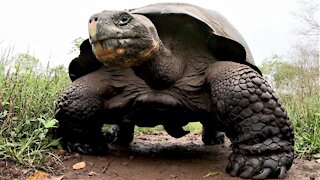 0:32
0:32
WildCreatures
4 years ago $1.96 earnedGiant Galapagos Tortoise runs over camera left on the trail
6.57K1 -
 0:53
0:53
KristysWorld
4 years ago $3.43 earnedAirport birds in Galapagos Islands feast on a french fry
3.39K -
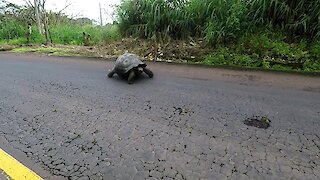 0:25
0:25
WildCreatures
4 years ago $3.66 earnedGiant wild tortoise gets right of way over traffic in the Galapagos Islands
2.92K4 -
 1:01
1:01
WildCreatures
4 years ago $5.19 earnedGiant Galapagos Tortoise happily munches away on grass
3.69K3 -
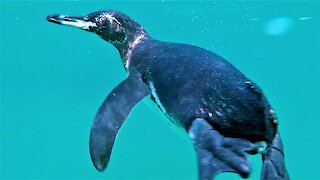 0:26
0:26
WildCreatures
4 years ago $5.02 earnedSwimmer meets curious Galapagos penguin close up
1.73K3 -
 1:07
1:07
WildCreatures
4 years ago $2.55 earnedGiant Galapagos Tortoise gulps water at his favorite drinking hole
3.57K -
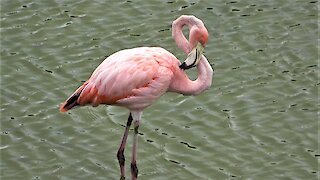 1:16
1:16
WildCreatures
4 years ago $0.09 earnedBeautiful pink flamingo eats shrimp in the Galapagos Islands
9.19K3 -
 1:22
1:22
WildCreatures
4 years ago $0.01 earnedThe blue-footed booby is one of Galapagos' most iconic animals
2.94K2 -
 6:49
6:49
ViralHog
5 years ago $0.15 earnedIncredible Crocodile Clash
745